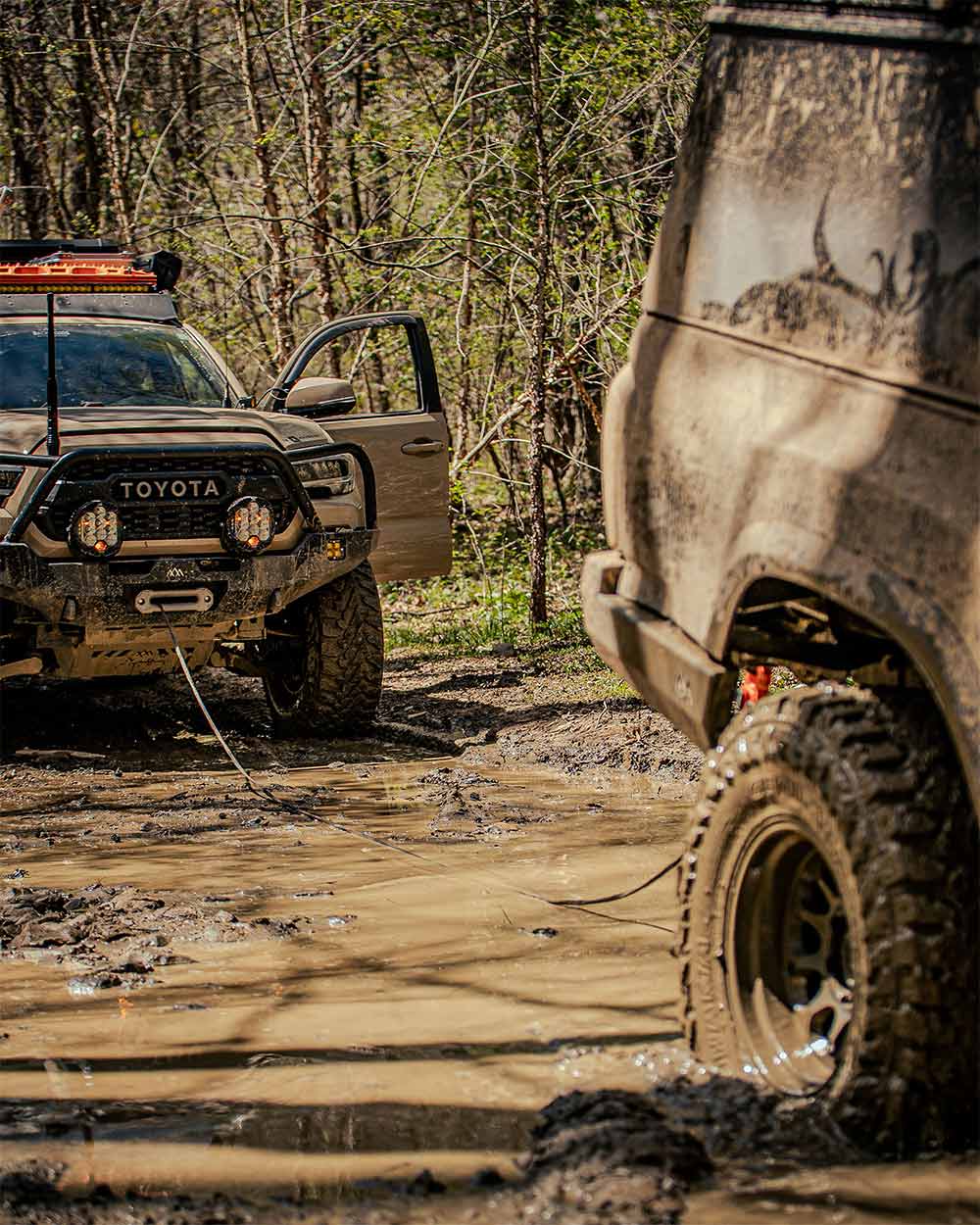Winching is one of the most essential skills for any overlander. Whether you’re tackling deep mud, climbing steep inclines, or helping out a buddy with a stuck vehicle, knowing how to use a winch properly can mean the difference between a quick recovery and a dangerous situation.
At Backwoods Adventure Mods, we take off-road safety seriously. That’s why we’ve put together this guide to help you winch safely and with confidence.
What is Winching?
Before we dive into safety tips, let’s define winching. Winching is the process of using a winch motor to pull or lift a load—usually a vehicle—using a winch cable, wire ropes, or steel cable. A winch can be frame mounted on your truck or SUV and is powered by an electric or hydraulic system.
Essential Winching Safety Tips
1. Wear the Right Gear
Winching involves high tension and heavy loads, so always wear gloves to protect your hands from frayed wire ropes or steel cable. Safety glasses are also a good idea to guard against unexpected snaps or debris.
2. Find a Solid Anchor Point
A strong anchor point is crucial for a successful recovery. Look for a sturdy tree, boulder, or another vehicle. Use a tree saver to protect the tree and prevent damage to your winch hook.
3. Know How to Operate a Winch
If you’re new to winching, practice in a controlled environment before you need it on the trail. Here’s a quick rundown on how to operate a winch:
- Engage free spool mode to pull out the winch line manually.
- Secure the winch hook to your anchor point using a tree saver or strap.
- Switch back to powered mode and slowly apply tension.
- Use a remote control to activate the winch motor and begin pulling.
- Keep the line steady and avoid sudden jerks.
4. Use Snatch Blocks for More Power
A snatch block can double your line pull capacity and allow you to change the pulling direction. This is especially useful when a straight pull isn’t possible or when extra power is needed.
5. Stand Clear & Communicate
Never stand too close to the winch cable while in use. If the cable snaps, it can whip back with deadly force. Keep bystanders at a safe distance and use hand signals or radios to communicate with your recovery team.

6. Keep the Winch Mount Secure
Ensure your winch mount is properly bolted to your frame mounted setup. A poorly installed winch can fail under pressure, making the recovery process dangerous.
7. Maintain Your Winch
Like any off-road tool, your winch needs regular maintenance. Inspect your winch cable for frays, check your winch motor, and test your remote control before every trip. If you use a hand crank winch, make sure it operates smoothly and isn’t rusted.
8. Know When to Call a Tow Truck
Sometimes, even the best winching techniques aren’t enough. If you’re in a bad spot and can’t get out safely, don’t risk damage to your vehicle—call tow trucks or seek professional help.
Stay Safe and Winch with Confidence
Winching is an essential skill for any serious overlander, but it’s also one that requires respect and caution. By following these safety tips, you’ll be prepared for whatever the trail throws your way.
Stay safe, keep your winch line in good shape, and remember—adventure is always better when you’re prepared!

